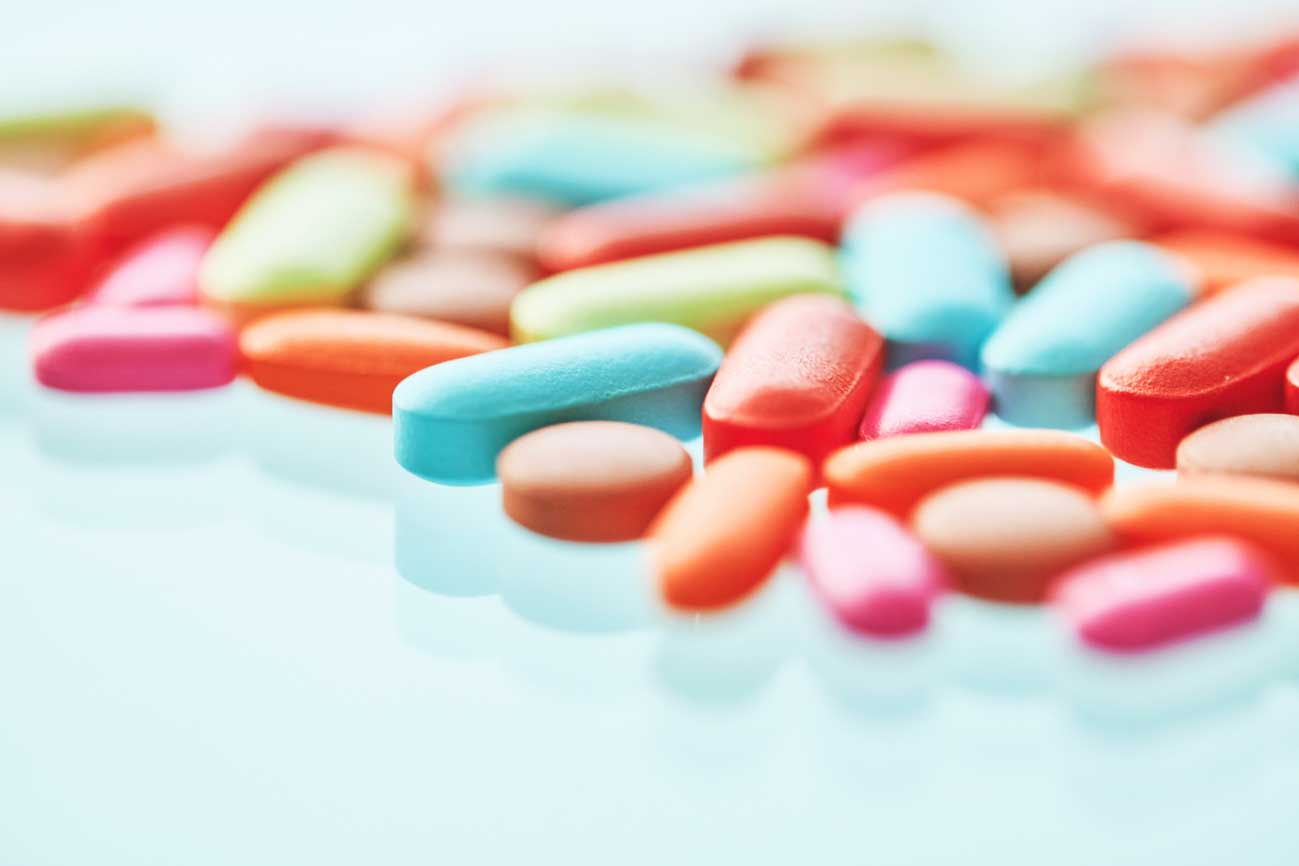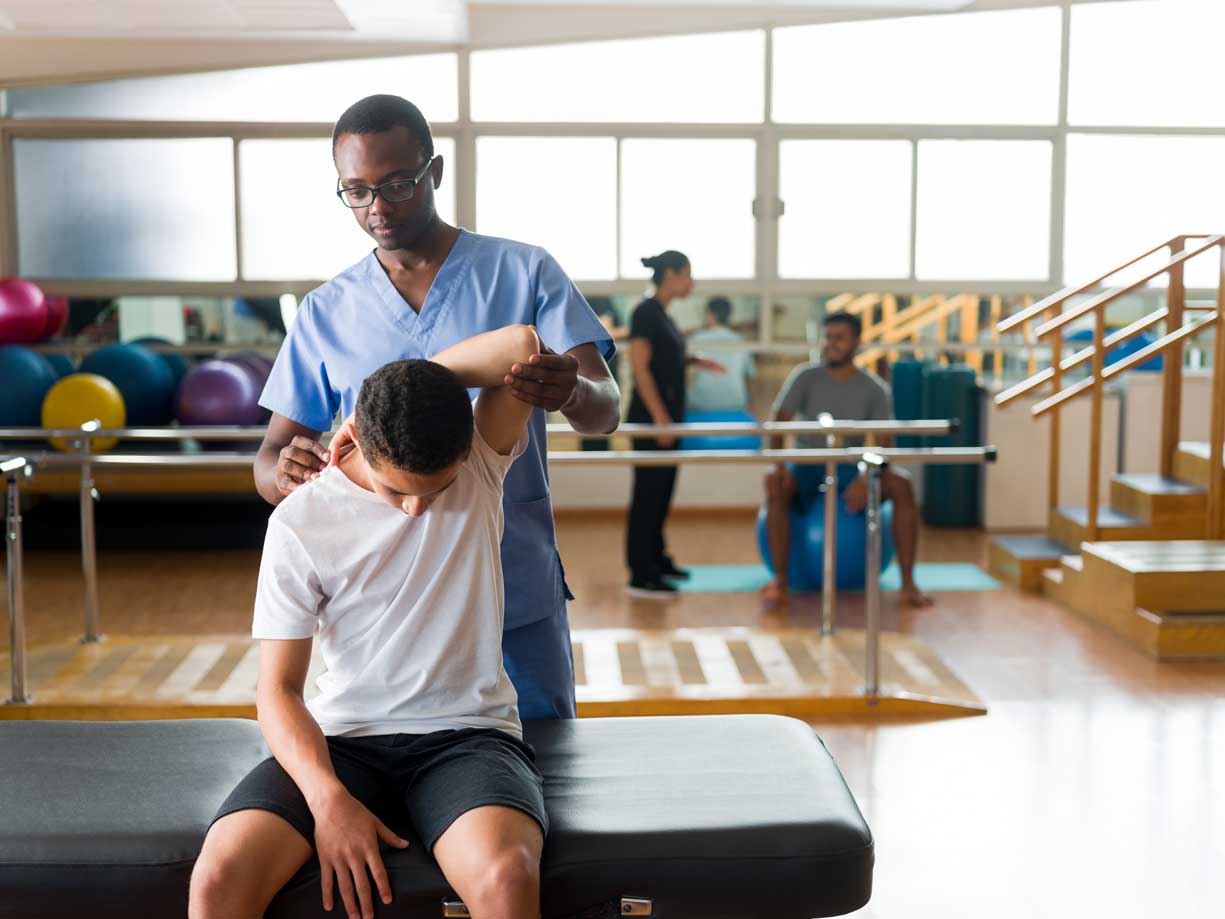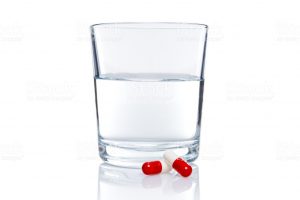Pain Management
At the time that this module was developed, national guidelines for the treatment of pediatric pain do not exist. Many adolescents who have received opioid prescriptions to treat pain have gone on to develop substance use disorders. 6,7,8 For this reason, it is generally recommended that providers avoid prescribing opioid medications to adolescents as a first line of treatment and, instead, use a multimodal approach to treat pain.
Multimodal pain approach
Pediatric practitioners must apply their best judgment when treating acute pain, and they should always make good use of non-opioid alternatives.9
Pain management should include a multimodal approach that includes both pharmacological and non-pharmacological interventions. Non-pharmacological interventions are particularly effective for patients with chronic pain.

A mulitimodal pain approach can include:
- Medications
- Non-opioid options (recommended)
- Opioid options
- Non-pharmacological interventions
- Music
- Hypnosis
- Acupuncture
- Cognitive behavioral therapy and other counseling approaches

- Enhanced early mobilization after surgery
- Physical therapy
- Sleep hygiene
- Establish a set bedtime and avoid caffeine and screen time before going to bed
- Consider melatonin or trazodone (SSRI) if sleep continues to be an issue. Both are non-habit forming.
Pain medication dose and intervals
The tables below present dosages and frequencies for non-opioid and opioid medications for the treatment of acute pain in children. Most individuals achieve satisfactory pain control with non-opioid treatment options; thus, providers should explore these treatment options for adolescents and parents first.
Treatment options for adolescent pain
Pediatric Pain Medications for Nociceptive and Neuropathic Pain10
| Non-Opioid | Frequency of Oral Dosing | Complexity of Dosing Schedule* | Common Side Effects | Cost |
|---|---|---|---|---|
| For nociceptive pain | ||||
| Acetaminophen | 10-15 mg/kg, q 6 hours | ++ | None | $ |
| Ibuprofen | 10 mg/kg, q8 hours | ++ | Easy bruising, swelling in feet, heartburn | $ |
| Naproxen | 5 mg/kg, q 12 hours | + | Easy bruising, swelling in feet, heartburn | $ |
| Celecoxib | 2-4 mg/kg, q 12 hours | + | Easy bruising, swelling in feet, heartburn | $$$ |
| For neuropathic pain | ||||
| Gabapentin | 5 mg/kg/day titrated to max 35 mg/kg/day, q 8 hours | ++ | Dizziness, drowsiness, fatigue | $$ |
| Lyrica | 5-10 mg/kg/day, q 12 hours | + | Swelling in feet/extremities, dizziness, drowsiness, headache | $$$ |
*NOTE: + = Easy, + = Moderately difficult, +++ = Difficult
Discouraged treatment options for adolescent pain
You can consider an opioid analgesic in acute, severe pain, such as after surgery or trauma. In these situations, you should limit the duration and discuss safe storage and disposal with the family and patient.
The prefrontal cortex does not finish developing until the mid-twenties. This timing places adolescents at a high risk of developing an opioid use disorder. You should talk to patients and families about this risk. Before using an opioid, consider the patient’s risk factors for developing a use disorder, especially childhood trauma or family history of substance abuse disorders.
In addition to the risk of developing an opioid use disorder, opioids can also cause constipation, dizziness, drowsiness, and nausea.
- Codeine and tramadol are contraindicated in patients < 12 years old and in patients < 18 years old following tonsillectomy and/or adenoidectomy. Avoid using tramadol and codeine in patients aged 12-18 who have other risk factors for respiratory depression.
Opioid Pediatric Pain Medication Dosages and Intervals
All opioids have an addictive potential. Use with caution, especially in adolescent patients.
|
Opioid |
Frequency of Oral Dosing |
Complexity of Dosing Schedule |
Side Effects |
Cost |
|---|---|---|---|---|
| Morphine | 0.3 mg/kg, q 3-4 hours | ++ | Constipation, nausea drowsiness, dizziness (do not drive while taking) | $$ |
| Oxycodone | 0.1 mg/kg, q 4-6 hours | ++ | Constipation, nausea drowsiness, dizziness (do not drive while taking) | $$ |
| Hydrocodone/APAP* | Doses based on hydrocodone:
< 50 kg: 0.1-0.2 mg/kg, q 4-6 hours >/= 50 kg: 5-10 mg, q 4-6 hours *max daily dose of APAP is </= 75 mg/kg/day in five or fewer doses. Do not exceed 4 g/d. |
+++ | Constipation, nausea drowsiness, dizziness (do not drive while taking) | $$ |
Treating acute pain
Acetaminophen and ibuprofen

For most patients, acetaminophen and/or ibuprofen is the basis for treatment.11 This combination has been shown to decrease opioid use by 40%.12
- Avoid non-steroidal anti-inflammatory drugs (NSAIDs) (i.e., ibuprofen) in patients who are dehydrated and/or have acute/chronic renal kidney injury.
- Be aware that some surgeons avoid NSAIDs post operatively due to an increased risk of bleeding in a minority of patients. (Evidence supporting this decision is both limited and mixed.)
- Avoid using opioid-acetaminophen combinations due to the danger of acetaminophen toxicity (i.e., hydrocodone-acetaminophen, oxycodone-acetaminophen).
- Acetaminophen and ibuprofen can be alternated every four hours so that pediatric patients receive an analgesia every four hours: acetaminophen (10-15 mg/kg every eight hours per mouth or rectum, max dose 90 mg/kg/24 hours or 4 g/24 hours) alternating with ibuprofen (5-10 mg/kg by mouth every eight hours).
- Refer to additional resources or a pharmacist for neonatal acetaminophen and ibuprofen pain treatment dosing recommendations. Ibuprofen for treatment of pain is recommended for children ≥ six months of age.
Gabapentin
- Gabapentin (Neurontin) is a GABA analogue that is generally used as an adjunct therapy for neuropathic pain and partial and secondary seizures. Typically, gabapentin is initiated at a low dose to avoid drowsiness and is then titrated to effect until the pain is controlled or maximum dosage recommendation in children is reached.
- Gabapentin should not be withdrawn abruptly. Instead, dosing should be gradually decreased over a minimum of one week.
Opioids (discouraged)
- Opioids produce analgesia by binding to mu receptors in the brain and spinal cord.
- Opioids are the most widely used and flexible analgesia for moderate and severe pain control.
- Morphine is the gold standard for IV control of moderate and severe pain.
- Oxycodone can be used as an oral opioid for control of moderate and severe pain.
- If adequate pain control is not achieved with acetaminophen and ibuprofen, opioids can be added to treat break-through pain.
- Long-acting opioids, such as methadone, extended release tablets, and patches, are not recommended for acute pain control.
- Although opioids are essential for the treatment of moderate to severe pain, be aware of the quantity dispensed. Center for Disease Control data shows a risk of long-term use at three days. The NC Stop Act limits supplies to five days for acute, non-surgical pain. A three- to five-day supply is typically recommended for acute pain, with adequate follow-up and re-assessment of pain and its etiology if indicated.
Treating chronic pain
 Children with chronic pain issues should be referred to an appropriate specialist, such as a pediatric anesthesiologist, a pain fellowship trained expert, or a hematologist/oncologist or other sub-specialist familiar with chronic pain in children.
Children with chronic pain issues should be referred to an appropriate specialist, such as a pediatric anesthesiologist, a pain fellowship trained expert, or a hematologist/oncologist or other sub-specialist familiar with chronic pain in children.
Refer to this article from the National Institutes of Health for more information about multimodal pain treatment options for children and adolescents if your patient with chronic pain is unable to access specialists or other trained experts.
Summary
A number of non-opioid pain treatment options are available for pediatric patients. Until national guidelines are developed for the treatment of pediatric pain, providers should work with adolescents and their parents to identify the treatment option that best meets their needs. Because opioid options carry a risk of opioid use disorder, they should be avoided as a first-line treatment for acute pain.